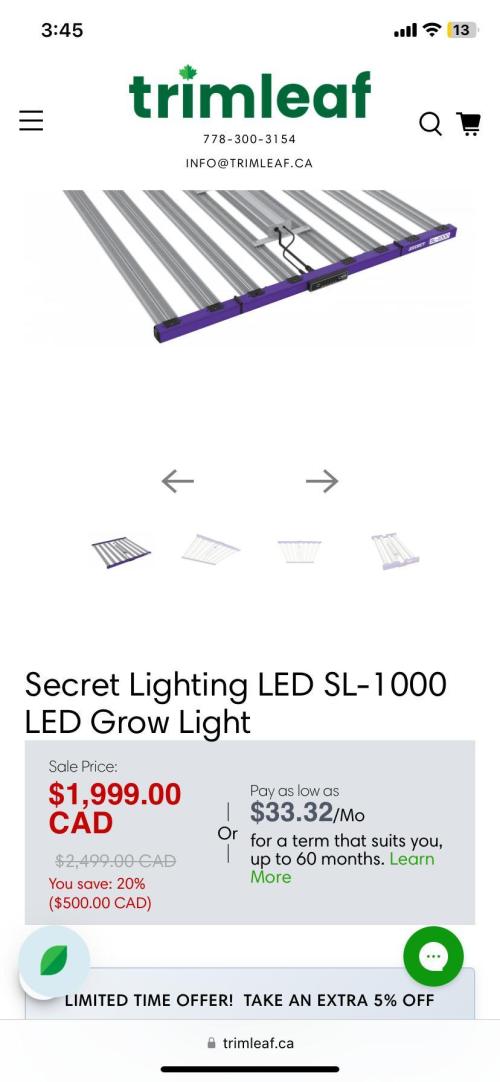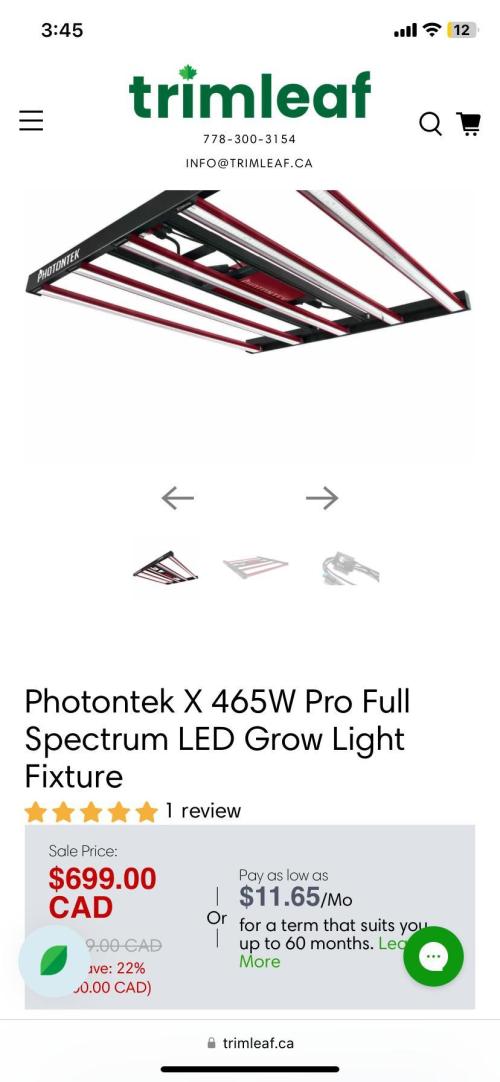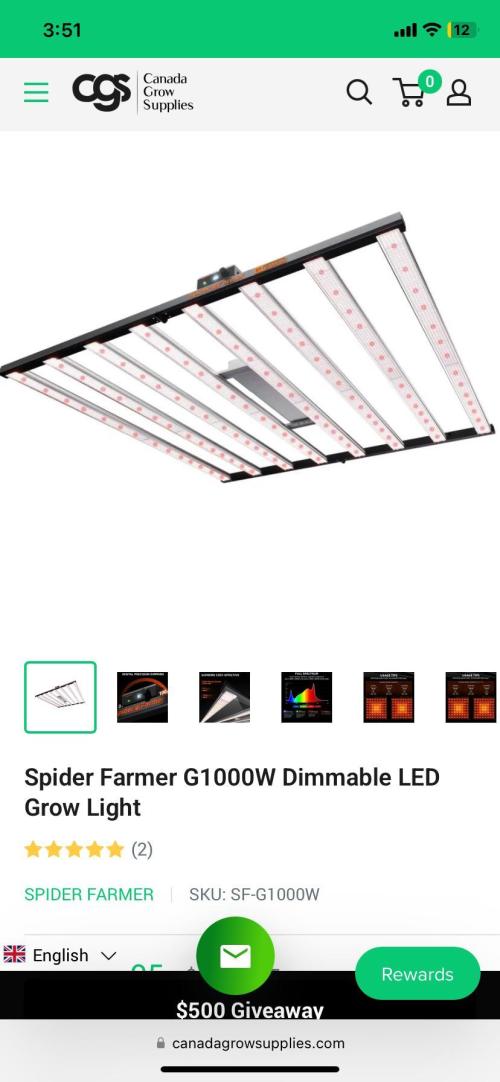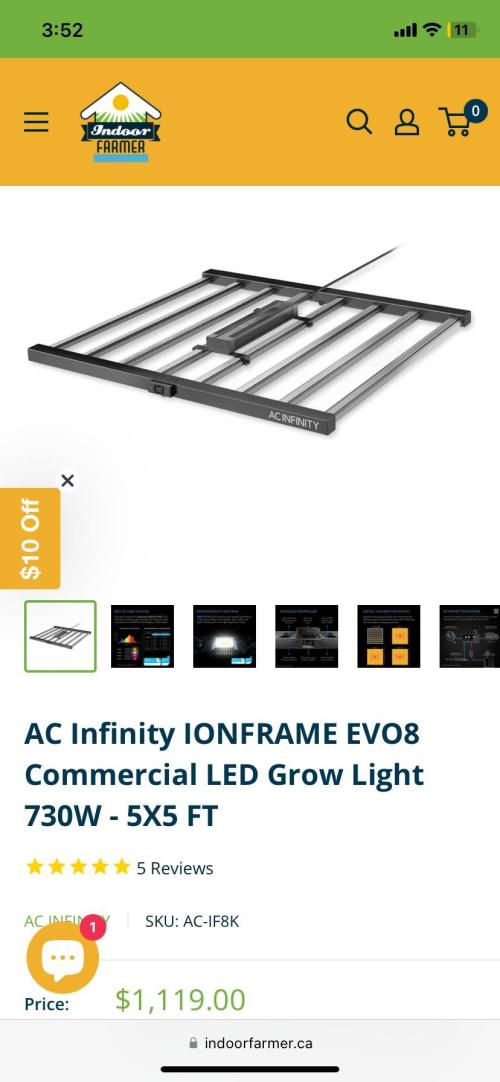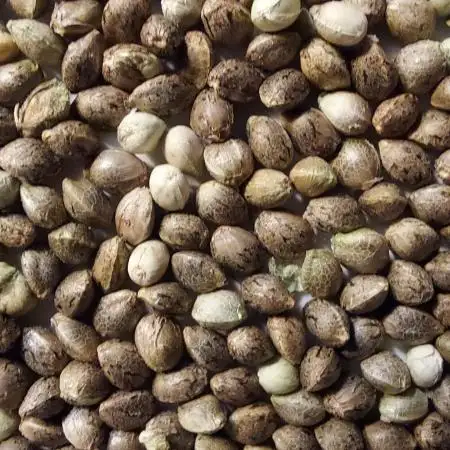The Grow Awards 2026 🏆
What brand of light / do you guys know anything about difference between full spectrum and the other lights than can provide these spectrums
Pogoman33started grow question 4mo ago
So I was told gorrilla grow is no good and with lotus so I’m looking into other brands I’m looking for a light where i can test out blue light in veg and red light flower I was told in a video by led grow lights depot .com that plants do like different spectrum. Here’s the lights
Open
likes
Answer
KurtHighgradeanswered grow question 4mo ago
If you want the best light spectrum choose SANlight. Better than anything from the other brands mentioned here, trust me! SANlight is a High End brand. Crafted for those who want that extra percent.
Not comparable to Spider Farmer, AC Infinity... Way better, bro!
likes
Complain
Still_Smoqanswered grow question 4mo ago
I use Vipar Spectra. The heat dispersement is fantastic, never hot to the touch.
likes
Complain
Hashyanswered grow question 4mo ago
Lol digit dude proper got into this answer. I know Ac infinity and Spiderfarmer are decent so I'd pick the best one for your space out of them 2
likes
Complain
00110001001001111Oanswered grow question 4mo ago
about blue vs red
It does have a measurable impact, but it won't change a leopards spots... a stretch bitch will always be a stretchy bitch. A stocky plant will always be stocky. the wavelengths of light may impact each slightly, but it will never be a profound effect.
yes, red will reduce branching and blue will promote branching, all other factors the same. It just is not a profound effect.
I've been growing half 2900k (higher R proportion) and haf 3400k (higher B proportion) for a few years at this point, and i cannot see any difference with the naked eye.
likes
Complain
00110001001001111Oanswered grow question 4mo ago
There are some concerns regarding heat dissipation - thought the need in this regard for a properly made high-end light is a low bar.
There are concerns about light distribution - frame size and diode distrubtion etc...
The biggest thing that sets a high-end light apart from an overpriced light is efficacy. Efficacy will relate to heat dissipation, too, as well as longevity of the equipment.
The light manufacturer's often lie - a lot. You need to take their base white diode of various CCT and compare to the spec sheets of the LED manufacturer. e.g. Samsung LM301 will be a popular one. Testing paramaters on samsung.com list .2 watts per diode. amping up beyond that will lower efficacy, shorten advertised longevity, and increase heat per watt produced (more waste and related to effiacy, obviously).
Heck the LM301 diode may have a 20% range off the peak efficacy just due to varying CCT options and binning process used. An LM301 diode doesn't have "1" set of specifications. only the 6500K diode hits the 3.1 umol/j effiacy listed... all other CCT fall short of that by up to 15-20% ,give or take.
So, the exact chip they used may not be easy info to get, but the diode count is easy to get.. you can count them up on your own if necessary. If they are run at power much higher than .2watts per diode, you know any specs they give matching the values of samsung.com testing is total bullshit.
1) assess heat dissipation - not some thin cheap ass shit?
2) assess light distribution - is the frame size right for your area of need? Bars/strip frames are much better options than quantum boards or any other configuration with tightly packed diodes.
2) Efficacy is king -- are they running the diodes at or above testing paramaters for power? Are the specs rational relative to LED manufacturer specifications? IF they are, are they being run at the appropriate power?
You don't have to do a weighted average for all diodes used in a light.. the bulk is fine. e.g. lm301-based light with 3000k and 5000k diodes... fuck that.. just take total watts and divide by total diode count -- the 760nm, the ir, the varying CCT, and anything else are a small percentage of the total. If it's supposed to be .20 watts and it comes to .25 watts, that's okay... you don't want to see .4w or .5w and higher... at that point you are losing a lot of efficacy and longevity (LM301 context only - other diodes may be tested at different watts).
This isn't meant to be 100% precise, but knowing the gist will out the cheap lights pretending to be high quality lights.
I'd ignore most gimmicks.. "ePAR" is supported by research, but most of the other stuff is hopes and prayers. IR, UV are not necessary - in fact UV that's applied at all times is just plain wrong way to implement it -- whether it has a measurable effect is yet to be proven thoroughly. I wouldn't let whether a light has IR impact my choice... i'd prefer a light without UV, but again, if they force it down your throat and all other specs align properly and it's the right price etc, it also won't hurt much either.
likes
Complain

